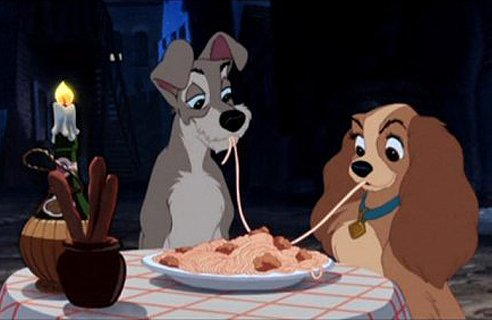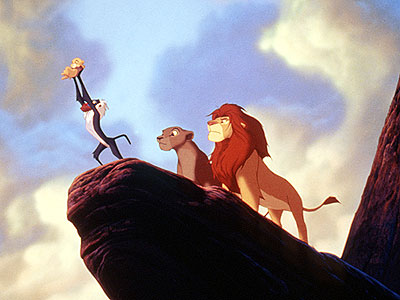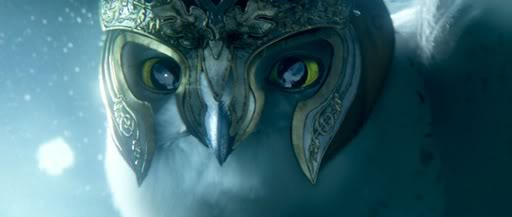Animals provide us with a lot of joy, whether as pets, wild creatures or performers. They have been the source for many lovable characters in animated films, and the new release of Rio hopes to do that with parrots in the city of Rio de Janeiro as filmmakers continue to look for new animals and locations for their movies.
Most children are acclimated to animals from an early age, from having pets, stuffed toys and visiting attractions like zoos. Animal characters slowly made their way into literature with books like The Jungle Book, The Wind and the Willow and Tarka the Otter, as well as in fairy tales, from Puss in Boots to the wolf in Little Red Riding Hood. Also, many animals are national symbols, from the Bald Eagle for the United States, Lions for England, Tigers and Elephants for India, Pandas being related to China, and the list goes on.
It was not long before animals made it into films; early characters like Felix the Cat and Mickey Mouse made their debuts in 1919 and 1928 in animated shorts. Disney quickly made features with four-legged critters, like Dumbo and Bambi. Particularly with Bambi, it has a perfect mix of cute animals in their natural environment (which most people in the 40s would not have seen) and shows childish fantasies of what animals get up and do and communicate when humans are not around.

Animated films quickly moved from wild animals to household pets and farm animals. In the 1950s we saw the British adaptation Animal Farm, the classic story and criticism of Stalinism which was partly funded by the CIA, and another Disney film (and a personal childhood favorite), Lady and the Tramp, a film set in the past in both upper class and lower class areas and a story of star-crossed lovers. It is a film featuring man’s best friend and a film that had humans as prominent supporting players.
Animation expanded, with Disney still being at the forefront. Disney explored the urban setting and jazz scene with stray cats and a historical adventure with a cast of animals, led by an anamorphic fox. But as well as family fair, Ralph Bakshi adapted the comic strip Fritz the Cat, a counter-culture piece and a satire of college life and drug culture. It was the first animated film to ever gain an X-rating in America and now a cult classic.
Don Bluth had a reputation in the 1980s for getting great animated features and a leave from Disney. But whilst Disney has a reputation for lighter fair, Bluth believed in making his films more darker and tragic. His debut of The Secret of NIMH is a darker tale and the animals have less than stellar reputations -- mice, rats and crows. Some of the animals had a really tragic past, being used in mental experimentation (though even mice and rats are domesticated as pets).
Disney turned back to a more realistic look when they made The Lion King (another childhood favorite of mine), getting their animators to study African animals to get their look and details just right. The Lion King action was all in Africa and unlike many other films, man’s evil presence is nowhere to be seen.

The age of CGI brought us even more animals and worlds onto the big screen. In the space of a few months, Antz and A Bug’s Life came out. Both brought everyday scenes like blades of grass and drops of water in a different light, and from being very small. They used the setting of ant nests and biology to create a society that has royal governments, a military and divided classes. But there was a lot of humor and action for all of us.
The Australian company Animal Logic brought realism to animated films to new levels. They brought in live action filmmakers George Millar and Zack Snyder to direct Happy Feet and Legend of the Guardians. Both have two very different approaches. Happy Feet is a big musical with an animal people love, penguins, and has an environmental message. Legend of the Guardians is a fantasy film featuring different species of owls and showing how owls would look in armor. Compare it to Dreamworks’ Kung Fu Panda, where the animals performed martial arts in ancient China, and with an eye on the growing Chinese market.

But of course there are many failures and some animals will never be cute or interesting. The Belgian film Fly Me to the Moon tried to make flies into a loveable creature; but audiences did not buy it. The outer space setting also did not work for Space Chimps, a grossly unfunny film lacking any charm whatsoever.
There are many reasons why animation looks at animals. They make easy mascots and symbols: Disney and Warner Brothers have a long list of characters like Mickey Mouse and Bugs Bunny, and the video game company Sega even used a hedgehog -- Sonic the Hedgehog -- for their mascot, an animal that is not well known in Japan or North America. Animal features can allow audiences to see animals in natural environments or in other cultures like Brazil and China. Animation can give filmmakers more freedom with what they can do in a film and can be used to show any setting, from historical to the natural world or to a city.
Filmmakers keep looking for new animals, settings and countries for their animations. There are plenty of members of the animal kingdom and places that could be examined including: tigers, dolphins, polar bears in the arctic, the jungles of India or Southeast Asia or the wide oceans.